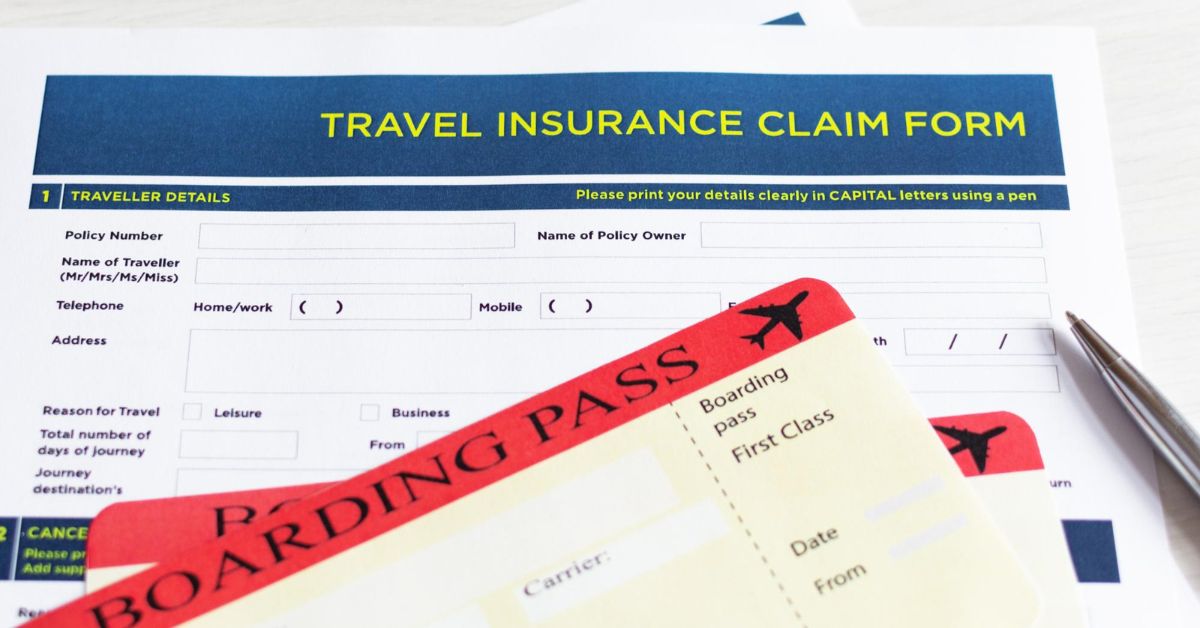Although traveling can be an exciting adventure, it does come with certain risks and uncertainties. Many unexpected things can happen to travelers, like delayed flights and lost luggage. Theft is a common worry: is your travel insurance going to cover you if your stuff gets stolen? This leads to the question, does travel insurance cover stolen items? In most cases, yes, travel insurance can provide coverage for stolen items.
However, the specifics of what is covered, the claim process, and potential limitations vary across policies. In this article, we’ll explore whether travel insurance covers stolen items and how to file a successful claim. If you understand these key details, you’ll be better prepared to protect your valuables on your next trip. Keep reading to learn more.
What is Travel Insurance?
Travel insurance is designed to protect travelers from unforeseen events that could disrupt their trip. Policies often include coverage for medical emergencies, trip cancellations, lost or delayed baggage, and theft. Depending on the policy, coverage can extend to personal belongings if they are lost, damaged, or stolen during the trip.
While policies vary, most travel insurance offers some protection for personal property. For instance, if your luggage is stolen, you might be eligible for reimbursement. However, it’s important to understand the limits and specifics of your chosen policy.
When purchasing a plan, knowing what your insurance covers can help you make the right decisions. As you travel, travel insurance can ease financial burdens and give you peace of mind.
Does Travel Insurance Cover Stolen Items?
Most standard travel insurance policies cover stolen items. If your belongings are stolen, you may receive compensation based on your policy’s terms. However, specific coverage details can vary widely. There are usually limitations on items such as clothing, electronics, and personal accessories.
The amount you can claim depends on your policy and the item’s value. Policies often include maximum limits for each item type. Additionally, some policies require that you report theft to local authorities within 24 hours.
This report is necessary for filing a valid insurance claim. Be aware that policies might exclude certain high-value items unless added with extra coverage. Always check your policy’s fine print to understand what is and isn’t covered for theft.
Types of Stolen Item Coverage
Travel insurance often includes coverage for specific types of stolen items. Here are common categories:
Personal Belongings Coverage
Personal belongings like clothing, electronics, and luggage are usually covered. Policies typically set a maximum amount per item.
Cash and Valuables
Cash and high-value items, such as jewelry, may have limited coverage or require an additional premium. Verify this with your provider.
Important Documents
Lost or stolen passports, visas, and other essential documents are usually covered. Reimbursement often includes replacement costs and related expenses.
When Travel Insurance Covers Stolen Items
Travel insurance can cover stolen items in several specific scenarios. Here are some common situations:
Delayed or Lost Luggage
If your luggage is delayed or lost by the airline and later reported stolen, your insurance may reimburse you. Policies often cover essential purchases if your bag is delayed, even before it’s confirmed lost or stolen.
Theft
Most policies cover personal belongings stolen directly from you or your immediate area. For instance, if a phone is taken from your bag, it may be eligible for reimbursement, provided you file a police report promptly.
Break-ins
If your items are stolen during a break-in, whether from your hotel room or rented car, this is often a covered situation. However, insurance typically requires proof of forced entry, so document any damage when reporting the incident.
Common Exclusions and Limitations
While travel insurance covers many losses, certain exclusions and limitations may apply. Here are common scenarios where coverage may not apply:
Unattended Items
Insurance usually excludes items left unattended in public or unlocked areas, such as a cafe table or hotel lobby. For coverage, always keep valuables in secure, locked spaces or within sight.
High-Value Items Without Extra Coverage
Standard policies may not fully cover high-value items, like designer jewelry or professional cameras unless extra coverage is purchased. Adding these items as specific endorsements can increase protection, especially for valuables over the policy limit.
Cash and Personal Funds
Cash is generally excluded or has a very low reimbursement limit. Most policies cover only a small amount, if any, to reduce risk. Consider alternative safety options for carrying cash, like preloaded cards.
Certain Personal Documents
Policies may not cover replacement costs for some documents, such as driver’s licenses, membership cards, or other non-essential paperwork. Essential documents, however, like passports or visas, often qualify for limited reimbursement.
How to File a Claim for Stolen Items
Filing a claim for stolen items involves several key steps to ensure a smooth process. Here’s how to proceed:
Report the Theft Promptly
Immediately report the theft to local authorities, such as the police or hotel security. Provide a detailed account of the incident. Obtain a copy of the police report for your records. This report serves as crucial documentation for your claim.
Notify Your Insurance Provider
Contact your travel insurance company as soon as possible. Most policies require prompt notification, typically within 24 to 48 hours of the theft. Use the phone number or online portal specified in your policy documents. This step initiates the claims process.
Gather Documentation
Collect all necessary documentation to support your claim. This includes receipts for stolen items and photographs showing their condition. Also, keep a copy of the police report as proof of the theft. Proof of ownership strengthens your claim significantly and expedites processing.
Fill Out the Claim Form
Complete the insurance claim form provided by your insurer. Be thorough and accurate when filling it out. Include all relevant details about the incident, including dates, locations, and item descriptions. Double-check your information to avoid delays in processing.
Submit Your Claim
Send your completed claim form along with all supporting documentation to your insurance provider. Use certified mail or a secure email option to ensure delivery. Keep copies of everything you send for your records. This ensures you have proof of submission if needed.
Follow Up
Stay in touch with your insurance company to check the status of your claim. Regular follow-ups can help expedite the process. Be prepared to provide additional information if requested. Maintaining communication keeps you informed about any updates or decisions.
Read More: Does Travel Insurance Cover Passport Issues
Conclusion
Finally, does travel insurance cover stolen items? Yes, most policies do provide coverage for stolen belongings, but it’s crucial to understand the specific terms. Knowing what items are covered, the circumstances for claims, and common exclusions can help you navigate the process effectively. Choosing the right travel insurance and following proper procedures can protect you from theft. Prioritize securing your valuables for peace of mind.


